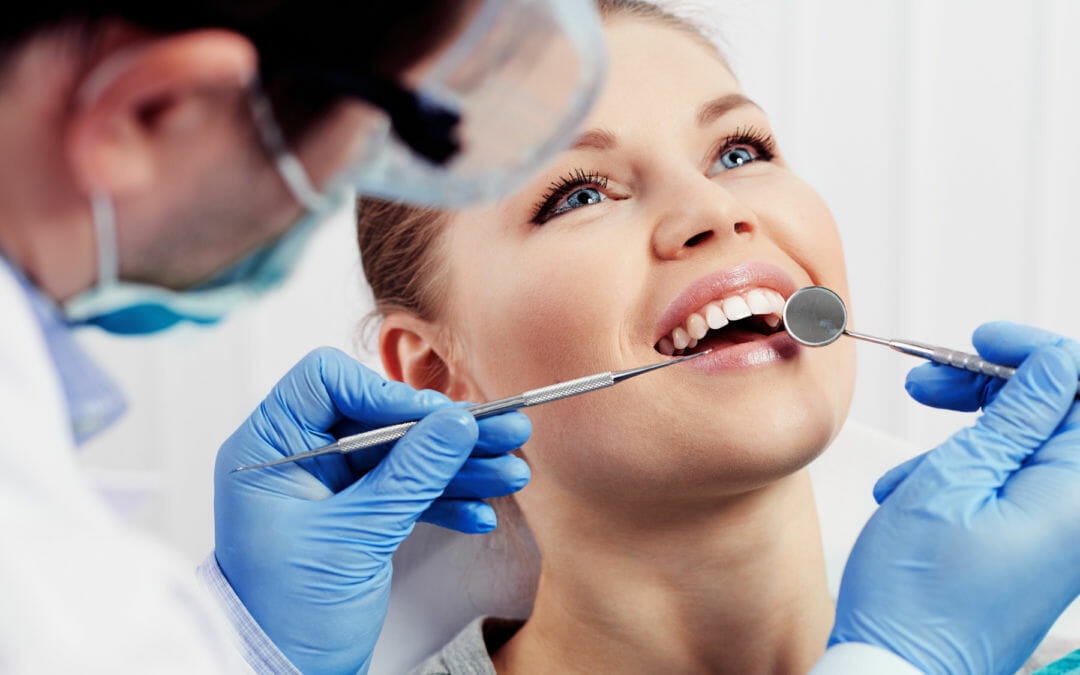Properly aligned teeth and jaws are the building blocks of a healthy, beautiful smile and good oral health. From treating pain to improving your ability to chew and bite, orthodontic treatment helps prevent serious dental procedures later in life. Problems like gum disease, tooth decay and breaking your teeth can all be avoided with orthodontic procedures.
What is Orthodontics?
Orthodontics is the treatment of misaligned teeth and jaws. This includes overbites and underbites, crooked or crowded teeth or teeth with too much space between them. An orthodontist specializes in performing these treatments, and will use special devices like braces and retainers to fix these problems.
What Procedures Are Considered Orthodontic?
Orthodontic procedures align your teeth, improve your bite and use a fixed or removable appliance to do so.
These procedures can be quite extensive and take multiple years, but the long-term, lifelong impact is undoubtedly worth it. After orthodontic treatment, everyday tasks like chewing, biting, speaking, flossing and taking care of your teeth will be easier.
What Are Common Orthodontic Procedures?
Everyone is different when it comes to oral care, which is why there are different types of orthodontic procedures. Your orthodontist will examine your teeth and take x-rays of your head and mouth to determine your needs. He or she will then build your treatment plan off these results.
Here are four common types of orthodontic treatment and the necessary procedures.
Metal Braces
The most common orthodontic treatment is traditional metal braces. In this treatment, brackets are attached to the teeth and connected with a wire. Braces place pressure on teeth so they move into the proper position in a patient’s mouth.
Over time, an orthodontist will tighten and adjust wires, add brackets to teeth and incorporate orthodontic elastics into treatment. Orthodontic elastics, or small rubber bands that hook onto metal brackets, work in tandem to help with jaw alignment. The total amount of time needed for treatment with traditional braces varies per patient, and can take multiple years.
Invisalign®
Alternate orthodontic treatments like Invisalign® have gained popularity for their flexibility, shorter treatment time and less noticeable style. Adults can also wear Invisalign® later in their life if they didn’t have traditional braces while a child.
Invisalign® is an excellent option for people who need corrections in their teeth alignment but don’t have severe bite issues. The treatment specializes in discreetly moving teeth, not making massive alterations in teeth location and alignment. For patients with more intense orthodontic needs, traditional metal braces are usually recommended.
During Invisalign® treatment, your orthodontist will create a series of clear plastic aligners that move your teeth little by little. Using special computer imaging technology, these aligners are custom-made for your mouth. Each aligner is designed for one to two weeks of treatment, and total treatment time takes about 12 to 18 months.
To use Invisalign® aligners, simply fit them over your teeth and wear them for 22 hours a day. You can remove the aligners to eat and clean your teeth. Unlike metal braces, you can eat hard, crunchy and sticky foods while undergoing Invisalign® treatment. It’s much easier to floss your teeth every day, too.
Lingual Braces
Another orthodontic treatment option is lingual braces, or braces that go behind the teeth instead of in front. Brackets and wires are still used in this procedure, but they are attached to the backs of your teeth instead. Lingual braces are common in adult orthodontics, but depending on your unique oral needs, may not be the best treatment option. Talk to your orthodontist about if lingual braces will work for you.
Retainers
Once you get your metal braces removed, you’ll need to wear a retainer for a certain period of time. Retainers help maintain your newly aligned teeth so they don’t shift again. You will wear either a removable retainer or a fixed metal retainer that permanently attaches to the back of your teeth.
Removable retainers are specially made for you so they fit securely to the roof of your mouth. Removable retainers do have a wire that goes over your teeth, but they don’t require brackets like metal braces do. There are even some clear plastic retainers that go over your teeth, similar to Invisalign®.
Retainers may need to be adjusted by your orthodontist over time, but generally require less maintenance than braces. Eventually, your orthodontist may decide you only need to wear your retainer at night instead of all the time.
Looking for Orthodontic Treatment in Cincinnati?
At Eastgate Dental Excellence, we understand that each patient requires individualized oral care and we provide quality orthodontic care to match. We are proud to offer both traditional metal braces and Invisalign® treatment in our office. Call us today for a consultation, or fill out our online appointment request form. Our team looks forward to discussing treatment options with you!

